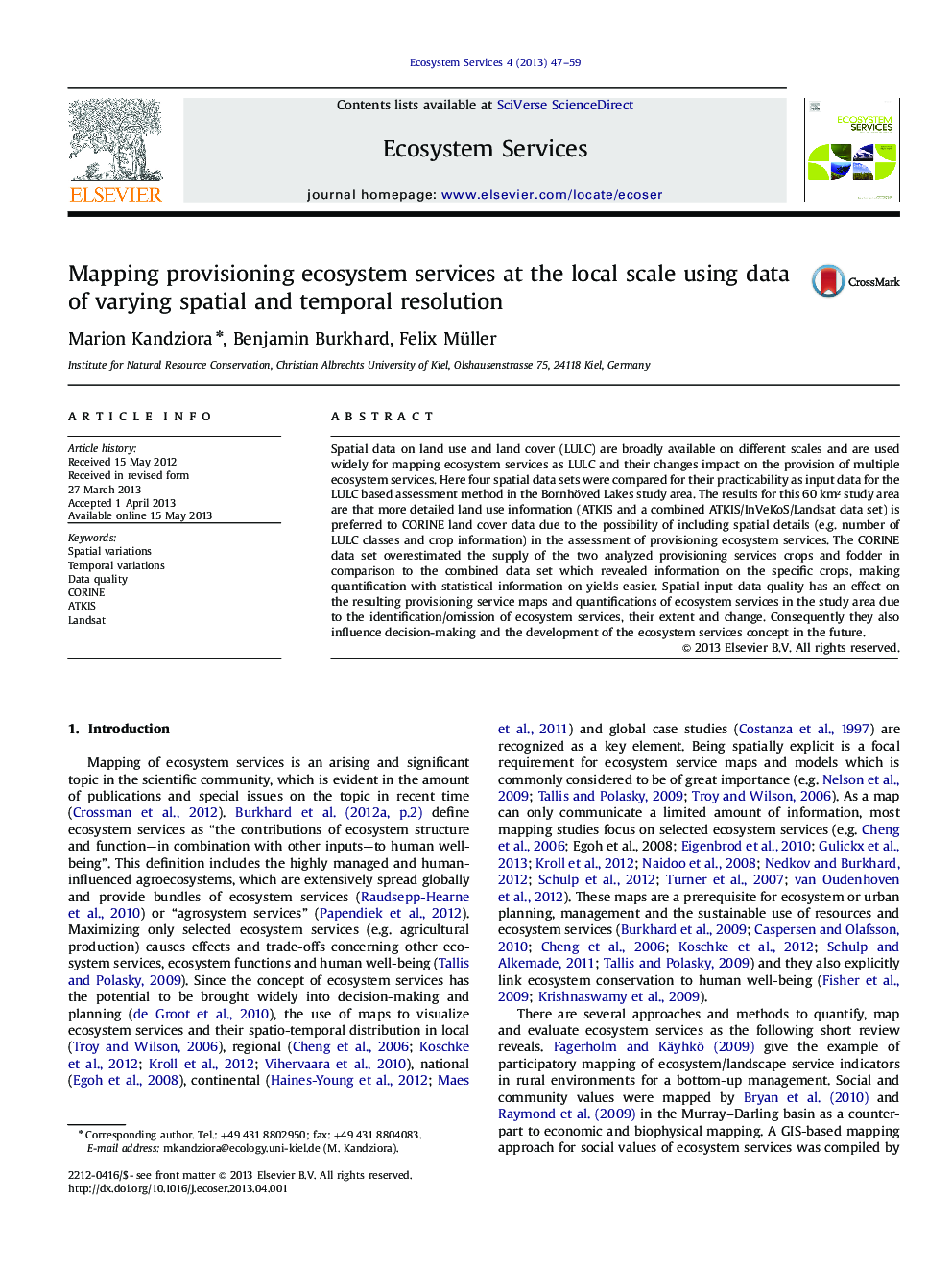| Article ID | Journal | Published Year | Pages | File Type |
|---|---|---|---|---|
| 108122 | Ecosystem Services | 2013 | 13 Pages |
•Different spatio-temporal LULC data sets were analyzed for their usability as mapping input.•Spatio-temporal variations in provisioning ecosystem service maps were visualized.•Corine land cover is overestimating the supply/extent of provisioning services in this study.•The need for detailed crop investigation for other ecosystem services maps is emphasized.•The effect of spatio-temporal data on ecosystem service maps is discussed.
Spatial data on land use and land cover (LULC) are broadly available on different scales and are used widely for mapping ecosystem services as LULC and their changes impact on the provision of multiple ecosystem services. Here four spatial data sets were compared for their practicability as input data for the LULC based assessment method in the Bornhöved Lakes study area. The results for this 60 km² study area are that more detailed land use information (ATKIS and a combined ATKIS/InVeKoS/Landsat data set) is preferred to CORINE land cover data due to the possibility of including spatial details (e.g. number of LULC classes and crop information) in the assessment of provisioning ecosystem services. The CORINE data set overestimated the supply of the two analyzed provisioning services crops and fodder in comparison to the combined data set which revealed information on the specific crops, making quantification with statistical information on yields easier. Spatial input data quality has an effect on the resulting provisioning service maps and quantifications of ecosystem services in the study area due to the identification/omission of ecosystem services, their extent and change. Consequently they also influence decision-making and the development of the ecosystem services concept in the future.
